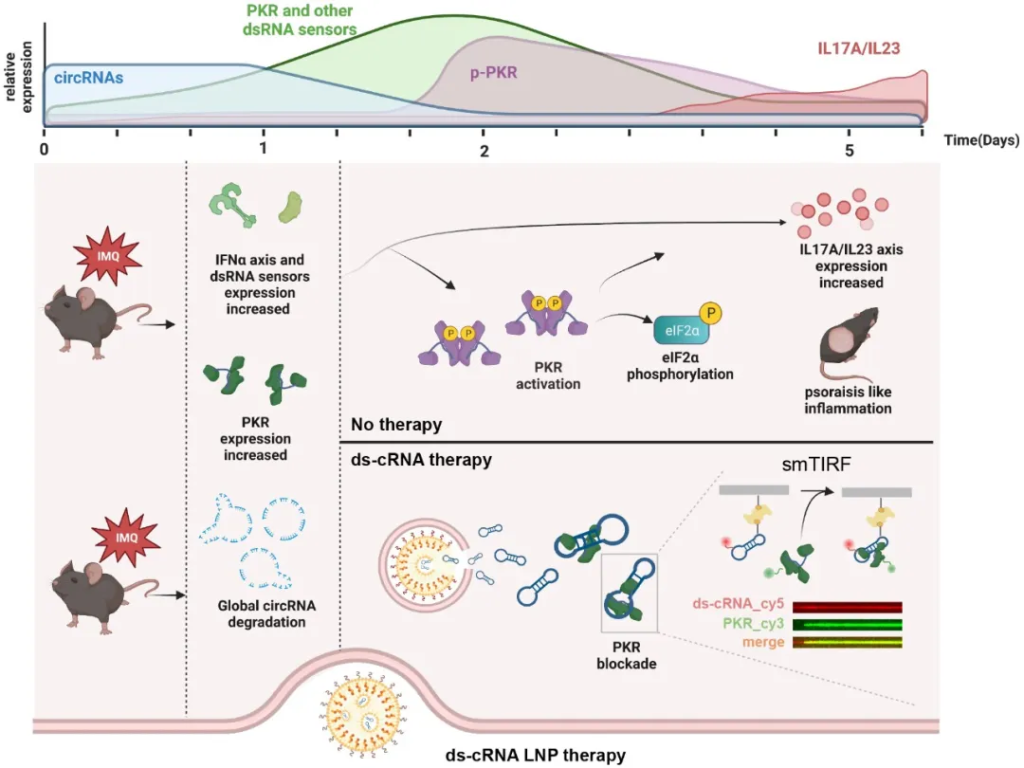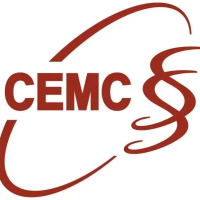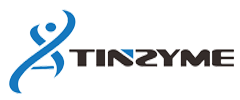Provided by Tinzyme: RNase R, Poly (A) Polymerase, etc used in the research.

Article on WeChat official account of CAS Center for Excellence in Molecular Cell Science
https://mp.weixin.qq.com/s/eq8PQ7BWTZ4B67-1yp5fTw
Title: Nature Biotechnology | Circular RNA Aptamers for Therapeutic Intervention in a Mouse Model of Psoriasis
Institute of Biochemistry and Cell Biology, Center for Excellence in Molecular Cell Science, Chinese Academy of Sciences
Shanghai, April 23, 2024
On April 23, 2024, the international academic journal Nature Biotechnology published online the latest research progress of the Chen Lingling research group from the Institute of Biochemistry and Cell Biology, Center for Excellence in Molecular Cell Science, Chinese Academy of Sciences, titled “Therapeutic application of circular RNA aptamers in a mouse model of psoriasis”. The study optimized a new method for RNA self-splicing into a ring, enabling large-scale synthesis of low-immunogenic circular RNA aptamers, and achieved therapeutic intervention in a mouse model of psoriasis, a disease related to abnormal activation of PKR.

Focusing on the cutting-edge basic research of ribonucleic acid (RNA) has expanded human understanding of the laws of life and has given rise to a series of RNA-based biomedical technologies that serve human health. For example, the 2023 Nobel Prize in Physiology or Medicine was awarded to the developers of mRNA vaccines. Circular RNA is a general term for a series of single-stranded, covalent, closed-loop structured RNA molecules. In the past decade, research has found that circular RNA is widely expressed and has specific pathways and rules for generation, processing, degradation, metabolism, and function (see reviews Chen, Nat Rev Mol Cell Biol 2016, 2020; Liu and Chen, Cell 2022). Compared to linear RNA, circular RNA has high stability, special folding, and low immunogenicity (Zhang et al., Cell Rep 2016; Liu et al., Cell 2019; Liu et al., Mol Cell 2022), making it a potential candidate for transformation into new types of RNA aptamers, protein translation carriers, and other biomedical applications. Utilizing circular RNA for therapeutic intervention and in vivo safety assessment in disease animal models is crucial for the future biomedical applications of circular RNA.
This study optimized a new method for RNA self-splicing into a ring, achieving large-scale synthesis of low-immunogenic and special double-stranded structure circular RNA aptamers (short double-stranded region-containing circular RNAs, ds-cRNAs). Using single-molecule total internal reflection fluorescence (smTIRF) at the single-molecule level, the study elucidated the dynamic interaction mechanism between ds-cRNA and PKR. The binding of PKR to ds-cRNA presents a long-duration, low-dissociation stable binding mode, indicating that ds-cRNA provides a spatial conformation more suitable for PKR binding and restricts its dissociation.
For the first time, the study established a stable overexpression circular RNA mouse model that can express circular RNA widely in various tissues with normal growth conditions, demonstrating the safety of circular RNA. The study achieved therapeutic intervention in a mouse model of psoriasis related to abnormal activation of PKR by targeting circular RNA aptamers, laying a theoretical foundation and technical basis for the development of new circular RNA drugs.

Utilizing large-scale synthesis of low-immunogenic circular RNA aptamers for therapeutic intervention in a mouse model of psoriasis
(a) Optimized the method for large-scale synthesis of low-immunogenic circular RNA aptamers in vitro, achieving the synthesis and purification of circular RNA up to 7,000 nt in length. (b) Used smTIRF to elucidate the dynamic interaction mechanism between PKR and ds-cRNA at the single-molecule level. (c) LNP targeted delivery of circular RNA aptamers to mouse spleen. (d) Circular RNA aptamers achieved therapeutic intervention in a mouse model of psoriasis.

Circular RNA aptamers for therapeutic intervention in a mouse model of psoriasis
In addition, the Chen Lingling team found in another study that delivering circular RNA aptamers through AAV could effectively alleviate neuroinflammation and memory decline in a mouse model of Alzheimer’s disease (Feng et al., bioRxiv 2024).
Dr. Guo Sikun, Associate Researcher Liu Chuxiao, Ph.D. candidate Xu Yifeng, Dr. Wang Xiao, and Dr. Nan Fang from the Children’s Hospital affiliated with Fudan University are the co-first authors of the paper. Researcher Chen Lingling from the Institute of Biochemistry and Cell Biology is the corresponding author of the paper. The work was supported by Dr. Yang Li from the Institute of Biomedical Research/Children’s Hospital affiliated with Fudan University, Professor Dan Peer from Tel Aviv University, Researcher Liu Jiaquan from the Center for Excellence in Molecular Cell Science, and Researcher Chen Ting from the Beijing Institute of Life Sciences. The study was supported by the Molecular Biology Technology Platform, Cell Analysis Technology Platform, and Animal Experiment Technology Platform of the Center for Excellence in Molecular Cell Science, and funded by the National Natural Science Foundation, Ministry of Science and Technology, Chinese Academy of Sciences, and Shanghai Municipal Science and Technology Commission.





